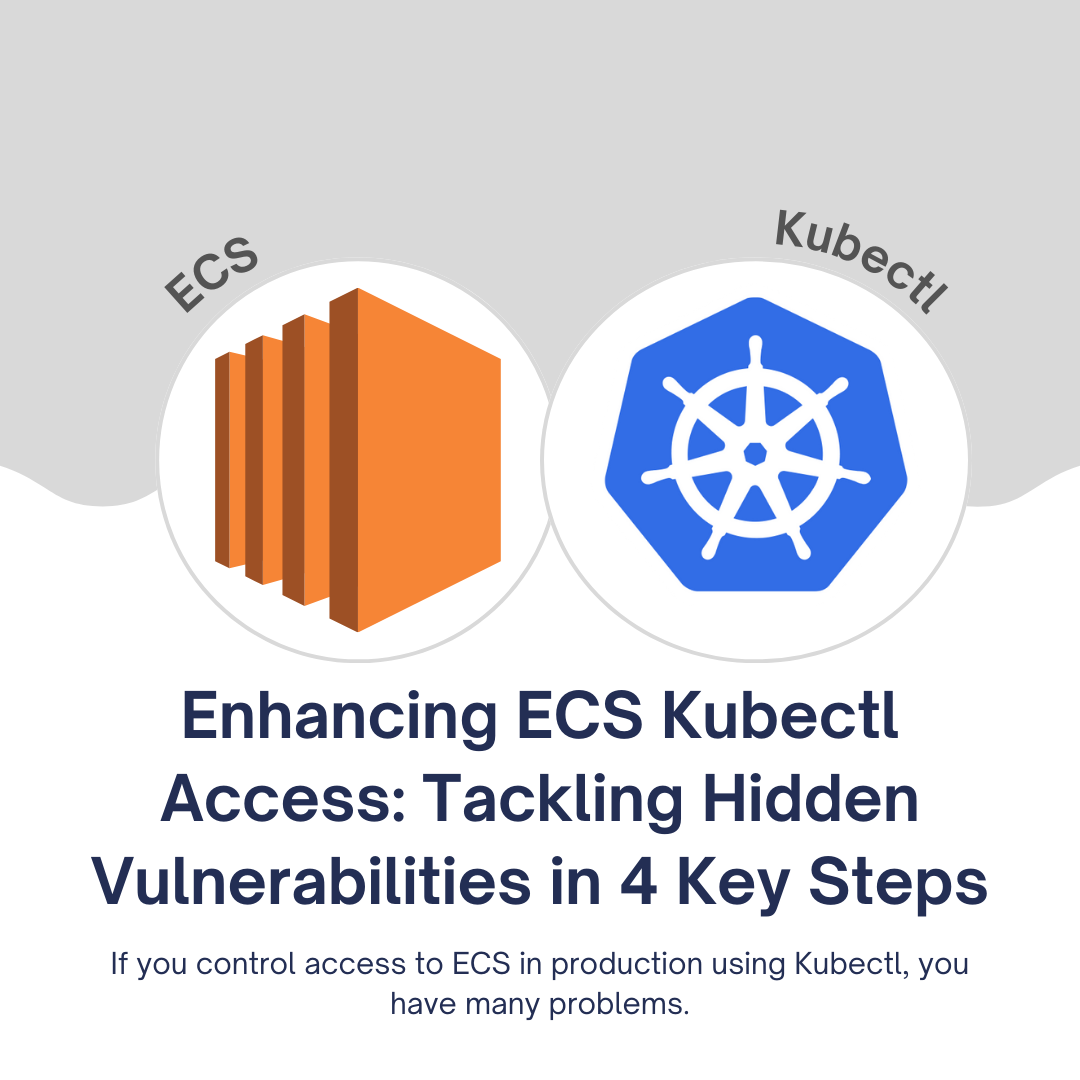Enhancing ECS Kubectl Access: Tackling Hidden Vulnerabilities in 4 Key Steps

If you're responsible for managing access to Amazon Elastic Container Service (ECS) in production using kubectl, you're likely familiar with the challenges this can pose. In this article, we'll delve into the five major issues that often accompany ECS access management, exploring their consequences and offering practical strategies to mitigate their impact. Let's uncover these hidden vulnerabilities and see how you can address them.
The Importance of Efficient ECS Access
Before we dive into the problems and solutions, let's emphasize why having efficient ECS access is crucial. Fast access to the right engineers in a production environment is paramount for maintaining product speed and ensuring a seamless user experience. Timely troubleshooting, bug fixes, and incident resolutions heavily rely on quick and efficient data access.
The Five Biggest Problems
Here are the five most significant problems encountered when managing ECS access using kubectl:
1. Security Risks
Many teams employ suboptimal solutions for granting access to ECS, leading to significant security risks. These risks can potentially jeopardize the integrity of your business's data and create unnecessary vulnerabilities.
2. Inefficient Workflows
Inefficient access management workflows can lead to delays and hinder productivity. Time-consuming processes can hinder the rapid response required in a dynamic production environment.
3. Infrastructure Challenges
Building infrastructure for ECS access using kubectl can be a daunting task. It often requires careful planning and execution to ensure it meets security and efficiency standards.
4. Hidden Vulnerabilities
These vulnerabilities often remain unnoticed but are potential attack vectors that can be exploited. They include:
- Single Sign-on & MFA: Lack of robust Single Sign-on (SSO) and Multi-Factor Authentication (MFA) can expose your ECS to unauthorized access.
- Audit Trials and PII Protection: Without proper audit trials and Personal Identifiable Information (PII) protection, compliance with regulations such as GDPR, PCI, SOC2, and HIPAA becomes challenging.
- Developer Experience: Neglecting the developer experience can lead to frustration and hinder productivity, especially when engineers face multiple hurdles to access ECS.
Addressing the Vulnerabilities
Now that we've identified the problems let's explore practical steps to address them effectively:
1. Gradual Implementation
Rather than attempting to address all these issues at once, use the 80/20 rule to prioritize and gradually implement the following features:
- Add ECS to Existing Systems
If you already use tools like Google Workspaces, you don't necessarily need to set up a separate LDAP directory. Integrate ECS access with your existing systems.
- Streamline SSO and MFA
Implementing SSO and MFA can be challenging but essential. Consider utilizing Cloud Shell solutions from AWS or Google Cloud, or explore tools like Runops. Start with Google OAuth to simplify the process and avoid adding unnecessary complexity.
- Industry-Relevant Prioritization
Tailor your approach to ECS access management based on your industry and regulatory requirements. Focus on improving Developer Experience, SSO, and MFA if you don't have stringent compliance needs. Conversely, for highly regulated industries, prioritize security and compliance features.
- Leverage Comprehensive Solutions
Consider adopting tools that provide access management for not only ECS but also other components like AWS/GCP, databases, Kubernetes, and servers. A single tool that covers all your access needs can reduce complexity and streamline management.
2. Adding Friction to Unwanted Access Methods
To discourage the use of insecure or non-compliant access methods, you can introduce friction into these processes:
- Form Submission
If the fastest access method lacks audit trails or compliance features, add a form submission step to the process. This incentivizes engineers to use the more secure method, as people typically dislike filling out forms. Over time, this friction can encourage a shift towards the desired approach.
- Jira Requests
To discourage ad-hoc access via the AWS web console, require engineers to submit Jira requests. While this may seem cumbersome initially, it can steer teams toward more automated and secure access methods. Gradually, you can enhance the user experience to make it more appealing than the console.
Conclusion
Managing access to ECS using kubectl presents several challenges, including security risks, inefficient workflows, infrastructure complexities, and hidden vulnerabilities. However, by following these practical steps and prioritizing your industry's specific needs, you can significantly reduce these vulnerabilities and ensure efficient and secure ECS access management. Remember, it's crucial to make the right access methods easy and discourage the use of less secure alternatives by adding appropriate friction to the process. In doing so, you'll strengthen your ECS access management and enhance overall security and compliance.
